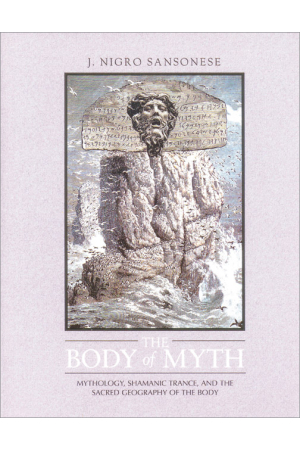The Body of Myth
Mythology, Shamanic Trance, and the Sacred Geography of the Body
- Pages: 384
- Book Size: 8.5 x 11
- ISBN-13: 9780892814091
- Imprint: Inner Traditions
- On Sale Date: June 1, 1994
- Format: Paperback Book
This book carries on from the works of Carl Jung and Joseph Campbell to show how the portrayal of consciousness embodied in myth can be extended to a reappraisal of the laws of physics; before they are descriptions of the world, these laws--like myths--are descriptions of the human nervous system.
List of Figures
Acknowledgments
Prologue
Introduction: Mythology Resurrected
PART ONE: TRANCE
1. The Sound of One Hand Clapping
2. Proprioception
3. Sublime Trance
PART TWO: MYTH
Indo-European Myth
4. What is Myth
5. Greco-Roman Esoterism
6. Sisyphus and the Stone
7. Myth and Animals
8. Recapitulation
9. The Three Worlds
• The First World
• The Second World
• The Third World
• Three-World Trance
10. The Number of the Beast
11. The Mantras of Myth
12. Sacred Geography
13. Sacred Architecture and Art
14. The Siege of Troy
15. The Crack in the Cosmic Egg
16. Dream, Death, Birth
17. The Mysteries of Eleusis
18. Jason and the Argonauts
Judeo-Christian Myth
19. Judeo-Christian Esoterism
20. The Myth of The Christ
21. Sin and Salvation
The Legacy of Myth
22. Myth: The Historical Foundation of Western Learning
PART THREE: SCIENCE
Myth and Science
23. The Three ages of Man
24. On the Possibility of an A Priori Experience
Psychoscience
25. Master Mechanic Isaac Newton
26. Clerk Maxwell Waves Goodbye
27. Heisenberg Isn't Sure
28. Darwin and the Temple of Solomon
APPENDICES
Appendix A: Newton's Three Laws
Appendix B: Maxwell's Equations
Appendix C: Quantum Mechanics and Psychogeometry
Bibliography
Index
Steve Larsen
"Much like a musical composition by Claude Debussy, this is an impressionistic book, full of mythological and physiological allusions that affect the reader with "Eureka"-type discoveries. The book's organization is unorthodox, yet it succeeds in convincing the reader that there is definitely a physical connection between the human body and mythologies. Sansonese, who has practiced raja yoga for years and here shows how yoga can be used as an effective means of attaining a deeper self-consciousness, reveals himself to be a natural successor to Joseph Campbell and Carl Jung. Readers in public and academic libraries who appreciate and delight in the juxtaposition of science and religion, East and West, will especially enjoy this esoteric volume."
Gary P. Gillum, Brigham Young Univ., Library Journal (Sunday , May 01, 1994)



